Stills from the animation:
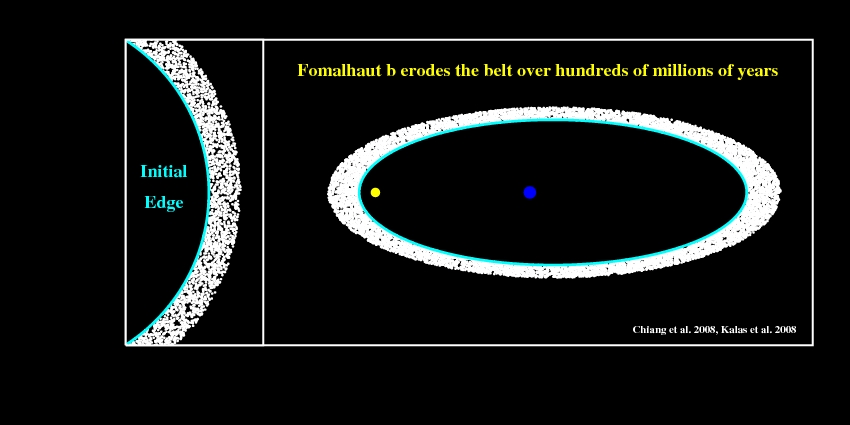
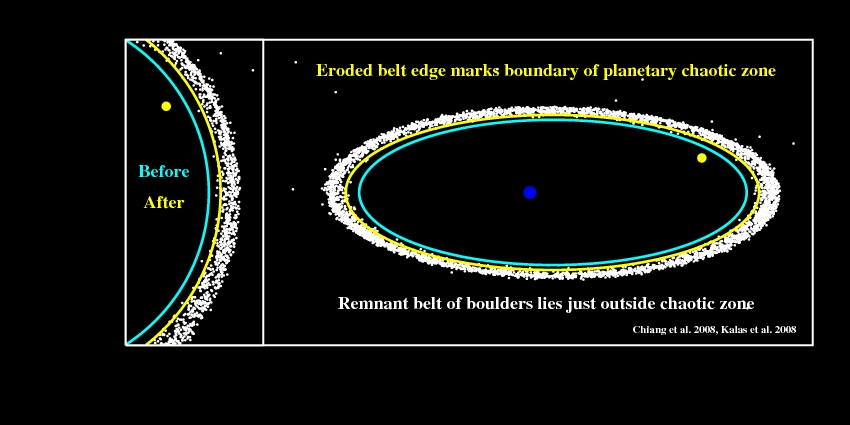

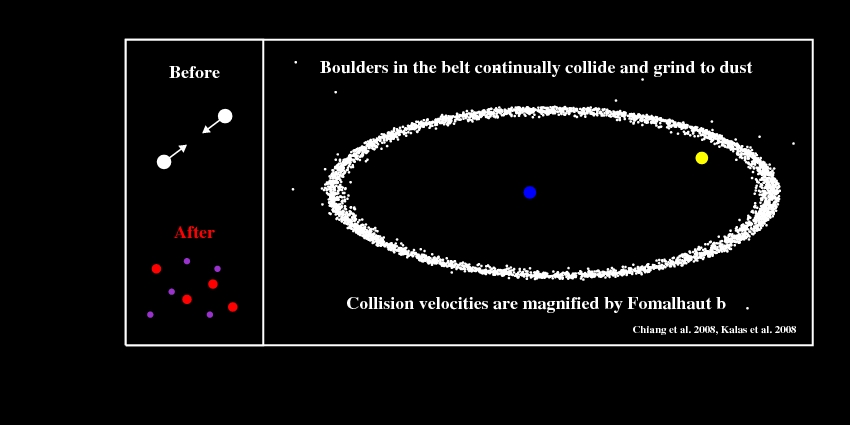
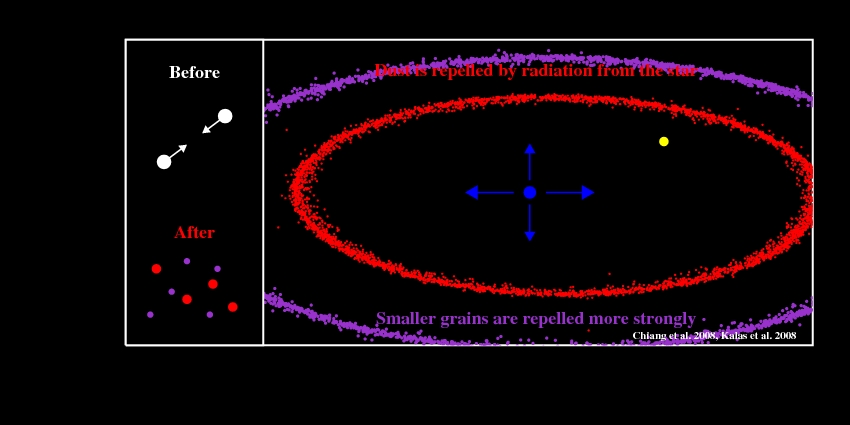
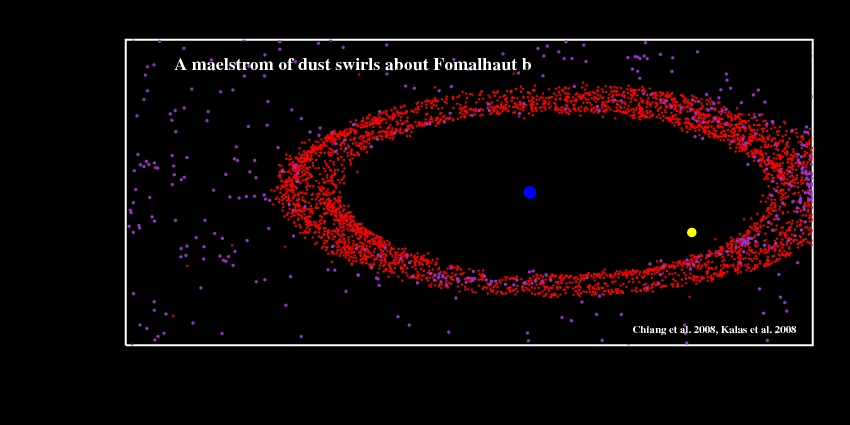
Fomalhaut b is the first extrasolar planet to be directly imaged at visible wavelengths and to have its orbital motion around its host star measured (Kalas et al. 2008). The Fomalhaut system might also present the first example of planet-disk interaction during a formative era. This interaction is the subject of the animation.
Over hundreds of millions of years, Fomalhaut b gravitationally ejects bodies from its immediate vicinity. It scours its so-called chaotic zone (Quillen 2006). The chaotic zone is a swath of space, enclosing the planet's orbit, that is purged of material because of dynamical instabilities (Wisdom 1980). In clearing its chaotic zone, Fomalhaut b erodes the circumstellar belt and carves out its inner edge. This erosion can be seen in the animation.
The realization that the belt edge is located at the periphery of the planet's chaotic zone led Quillen (2006) to predict that a planet would be found orbiting just interior to the belt, with an orbital semimajor axis of 119 AU. This prediction appears vindicated by the discovery of Fomalhaut b, which indeed was found close to the belt edge.
Previous Hubble Space Telescope observations revealed that the belt is elliptical (Kalas et al. 2005). The intrinsic ellipticity led to expectations that a planet was responsible (Wyatt et al. 1999). Planets on elliptical orbits imprint their ellipticities onto surrounding belt material. If Fomalhaut b were the only planet in the system, we would expect its orbit to be elliptical and nested nearly perfectly inside the belt. The nested nature of the orbits, and the belt's intrinsic ellipticity, are highlighted in the animation.
These same Hubble observations detect the belt because of its myriad dust grains, typically each about 10 microns in size. These tiny but numerous dust particles reflect light from the host star to Earth. The dust is continuously generated from the collisional destruction of larger rocky/icy objects. We estimate that there are 3 Earth masses alone in boulders about 10 meters in size apiece (Chiang et al. 2009). The boulders, gravitationally stirred by Fomalhaut b, smash into each other at speeds exceeding hundreds of meters per second, producing dust that is blown outward by the host star's prodigious radiation. The animation concludes with a glimpse of the maelstrom of dust swirling outside the planet's orbit.
Our mass upper limit is independent of interpretations of Fomalhaut b's spectrum. That spectrum has proven surprising because it does not immediately fit current atmospheric emission models. Because the belt contains so much mass, there is plenty of material for Fomalhaut b to have been born in situ at its current, unprecedentedly large distance from the host star of about 119 AU (1 AU is the Earth-Sun distance). Fomalhaut b possibly points to new channels for planet formation.
The research described on this page was supported in part by the National Science Foundation (award 0507805).